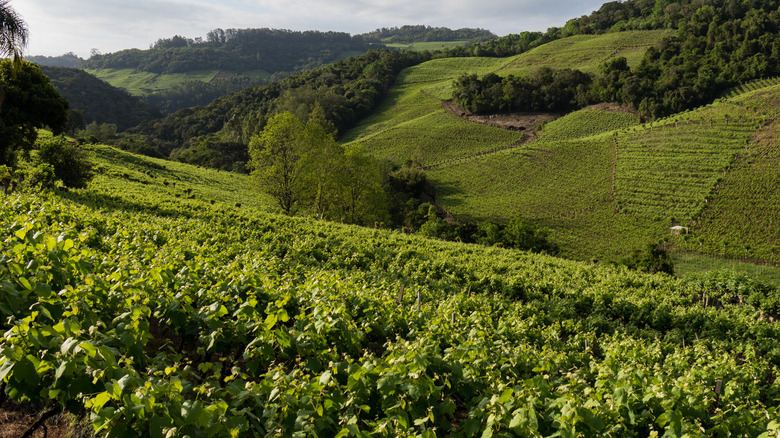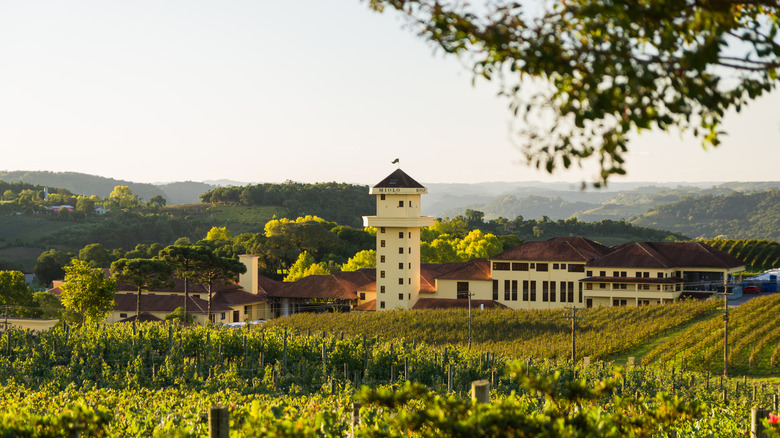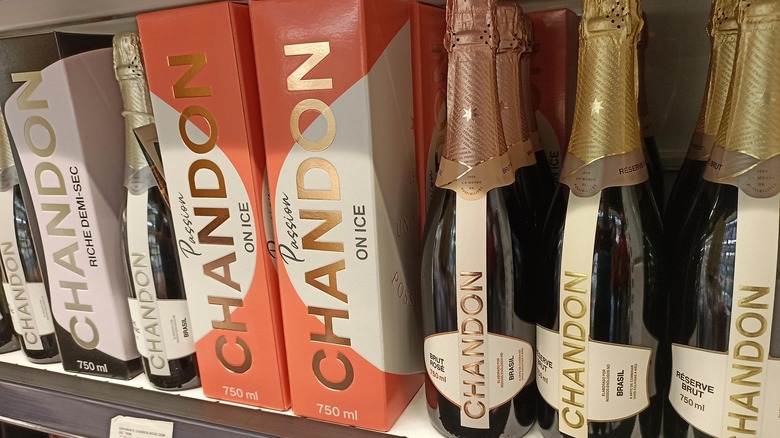Why Brazil's Serra Gaúcha Wine Region Stands Out From The Rest
When we think of Brazil, we might crave a Brazil nut or those absolutely irresistible cheesy puffs they serve at Brazilian churrascarias. You might know that most of the world's açaí comes from Brazil, or you may just fantasize about sipping a caipirinha on one of the most beautiful beaches in the world. But we don't often think about Brazilian wine ... though that may be changing.
Viticulture, or growing grapes for winemaking, dates back much further in Brazil than you might think; the first grapevines came to Brazil in 1532, according to Virgin Wines, when the Portuguese planted vines in São Paulo. But France's Moët & Chandon saw the real potential for Brazil as a major wine-producing country in the 1970s when they established Chandon Brasil to produce sparkling wine in a place most people didn't recognize as a significant player in the world's wine scene.
Brazil has six distinct wine-growing regions, and according to Jancis Robinson, is South America's third largest wine-producing country, but there's one region that stands out from all the rest. Serra Gaúcha is Brazil's most important wine region, and exciting things are happening there.
What makes Serra Gaúcha special?
The Portuguese weren't the only settlers in Brazil with a history of winemaking; Prestige Haus points out that many of the immigrants to Serra Gaúcha in the 1880s were from Northern Italy, which explains why older vineyard plantings in the area featured grapes like Barbera and Trebbiano. Those varieties have been supplanted by international grapes like Cabernet Sauvignon, Pinot Noir, Chardonnay, and Merlot, though the Italian influence lives on in the architecture and cuisine.
Though according to Virgin Wines, it is the unique climate of Serra Gaúcha that makes it ideal for viticulture. The region's naturally high humidity would invite rampant fungal afflictions if it weren't for the nearby mountains, which bring cooling breezes that help temper the tropical environs. Volcanic soils provide the nutrients vines need, and in 2002, Brazil's first denomination of origin (DO) was created for Vale dos Vinehedos in Serra Gaúcha as a way to recognize the area's unique climate and growing conditions.
Sparkling wines shine in Serra Gaúcha
Though plenty of still wine is produced in Serra Gaúcha, Moët & Chandon's investment there is a tipoff to the region's great potential for producing world-class sparkling wine. And the world has taken notice; in November of 2022, a sub-appellation of Serra Gaúcha was recognized as the first DO specifically dedicated to sparkling wines in the New World, according to Decanter. This new DO, Altos de Pinto Bandiera, establishes the region as producing sparkling wines that are as distinctive as those made in the Champagne or Franciacorta DOs, according to grape and wine researcher Jorge Tonietto.
Just three grape varieties are legally permitted in the Altos de Pinto Bandiera DO: Chardonnay, Pinot Noir, and Riesling Italico, which is also known as Welschriesling. Crop yields are limited, in accordance with high-quality viticultural practices, and a mere four wineries are currently entitled to produce their traditional-method sparkling wines with the new DO on the label. Wine, Wit, and Wisdom notes that the regulations for the new DO require that wines show "balanced acidity and a velvety texture in addition to a complex range of aromas and flavors to include notes of citrus, yeast, honey, and roasted almonds."
Already established as the premiere winemaking region in Brazil, Serra Gaúcha sparkles a bit brighter with the addition of its new jewel, the Altos de Pinto Bandiera DO.


